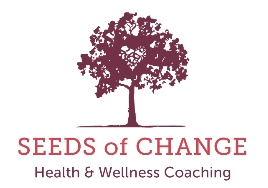I’m not sure of the exact moment life changed for you, but sometime during March 2020, your comfortable & familiar world drastically changed. We may all live in different countries or time zones yet are now forever bonded with our new & unprecedented reality of staying safely sheltered in our homes, social distancing, facemasks, handwashing, and dealing with empty store shelves as we skirmish for toilet paper and hand sanitizer.
We laugh at coronavirus jokes on social media one minute; and the next minute we are anxious with the economy, our financial future or become emotional as we face the sobering reality of the rising daily infection rate & watch the death toll increase each day. It still doesn’t feel quite real. This is all a Hollywood movie and can’t possibly be happening. Then, we hear of friends, family members & celebrities—real people that we know or at least, we know of them– that are either genuinely sick or already dead from COVID19.
Today’s daily government briefing just mapped out projections for the next few months and from the look of it, this isn’t going away anytime soon. This “new reality” may be here a while.
These are a few of the strategies I’ve used over the past month to keep a solid sense of wellbeing & not go too stir crazy (I have had, admittedly, a few moments already….). The Serenity Prayer says “God, Grant me the serenity to accept the things I cannot change; the courage to change the things I can and the wisdom to know the difference.” May these suggestions offer you some perspective as you navigate some of the ‘things you can change’ amidst this new normal.
- Social distancing does not mean social isolation: Introverts—hear this—while this may be your dream world come true: Be careful to avoid ‘avoiding people’–While we are all maintaining physical distance, use this opportunity to take a page from your extrovert friends & connect emotionally & virtually with people. This is a time when many people are physically isolated, especially the elderly & even single adults who may work from home & live alone. Set up virtual coffee dates or lunch dates over Zoom or Facetime, write letters (remember that? Real mail!) call and check on people; reconnect with relatives & friends. Too much social isolation is unhealthy—you already know this– so make efforts to connect any way you can.
- Staying at home doesn’t mean staying in your pajamas all day: Each day, create a routine that involves showering & dressing in actual clothes—it’s amazing how much different you will feel & how much you can accomplish wearing real clothes versus pajamas or sweatpants. Staying in pajamas all day can lead to depression & lethargy.
- Create a structured plan for your day: Too much down time with no boundaries can produce the experience of floundering. While most people don’t want high amounts of stress, our brains crave some stress—we need meaning & purpose to our day; and we need to have some feeling of accomplishment if we are to feel fulfilled. Be sure to set limits on television & social media. Give thought to what brings value to your life & focus your attention on that—consider anything that needs to get done, home projects, exercise, phone calls, books to read, something you’d like to learn or people you’d like to see (virtually) or get to know, etc. Create set blocks of time for work, rest, play & relaxation.
- Tap into your creativity: Creativity balances your brain & generates a sense of calm which can quell anxiety you may be feeling. We listen to & process the news using our left brain—it is the intellectual side of our brains. Anything fun & creative taps into the right brain—music, art, poetry, painting, sculpture, dancing, singing, coloring, playing, knitting, drawing, learning an instrument, writing, etc. In addition to turning off the news, take some time to play. People with small children often have natural & endless opportunities for play & creativity. If you don’t have little kiddos in your life, this one will take some self-generating, but is worth the effort.
- Get outside every single day. Fresh air is not only good for your body, it is good for your soul. Being able to connect with nature, hear birds chirp, feel the sun on your skin, watch the trees blow in the wind—all this experience is healing. If you have the ability, add exercise or walking outside to your routine as an extra bonus (and pack a healthy picnic lunch).
As we all move forward into this new reality, let’s give each other not only literal physical space, but also, let’s be generous with figurative space—Some would call this “grace” –Remember that everyone is managing the best they can right now. We are all dealing with our own stages of grief—our normal routine has been lost and it’s a real loss, similar to any other death. A quick re-cap of those stages: The first stage is denial (hello spring break college kids); the second is anger (aka–people fist fighting over toilet paper)—anger can come out sideways sometimes through frustration & irritability with loved ones—especially if you are spending 24/7 with them in the same house. The next two stages are bargaining (rationalizing) & depression. Finally, the last stage of grief is ‘acceptance’. There is a light. We, as a society, will likely move through all these stages to varying degrees. Realize none of us are alone and we are all affected in some way. Be quick to forgive people, find the humor, lighten the mood and keep breathing (with a facemask, of course). 😊
I remember reading once that the Japanese word for “danger” was a blend of the two symbols for “crisis” & “opportunity” merged. For this week, may you focus on the opportunities that this crisis brings to your life, your loved ones & to our world.
